A permanent fence
Building a reliable fence seems like the best solution, because it will protect you from prying eyes, unwanted visits and direct encroachments on your property. But in some gardening associations, it is prohibited to build an impassable fence exactly along the border of the plots. This is due to fire safety requirements. Landowners occupying distant plots must be able to quickly and easily evacuate through the territories of their neighbors.
A permanent dacha fence cannot be higher than 2 m. If you are determined to build it, despite the ban, there is a legal way out – retreat from your borders 1.5 m deep so that a bypass road is formed between the plots. The downside of this idea is obvious – loss of useful space.
An economical option: install a high fence not around the entire perimeter of the dacha, but only on the side from which you are subject to regular invasions of privacy.
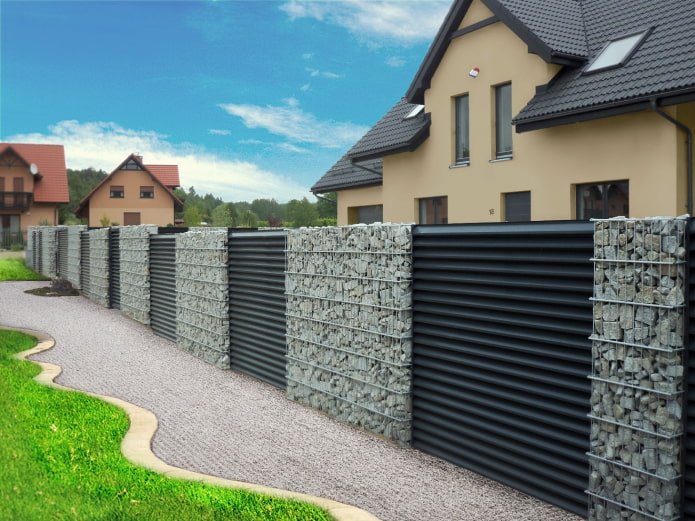

Grid
Fences that let in light and are easily dismantled, such as chain-link fencing, are not subject to the above-mentioned ban. They are installed in literally one working day and are inexpensive. But how can they help hide from prying eyes?
You need to add protective material to the chain-link fence:
- shading net, which is sold in garden stores;
- tarpaulin or camouflage net, if you have a liking for military equipment;
- photo mesh, which looks impressive, lasts a long time and is easy to wash;
- artificial pine needles, natural rods or branches.
The chain-link fence will become a cozy haven for bindweed, but you will have to wait for it to grow and make sure that your guardians of peace do not crawl onto the neighboring plot.

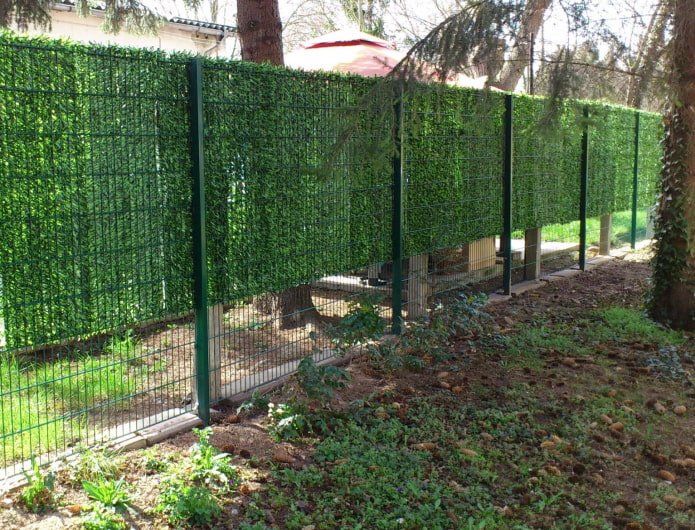
Hedge
If things aren’t urgent and you still have some patience, plant a hedge along the border of your dacha. It is not subject to fire safety restrictions, can be of any height and density, but should not create unwanted shade on the neighbors’ property, so you will have to discuss your plans with them in any case.
Picturesque and unpretentious crops are used for green fences:
- juniper;
- barberry;
- cotoneaster;
- hawthorn;
- dogwood;
- mock orange;
- hydrangea;
- thuja.
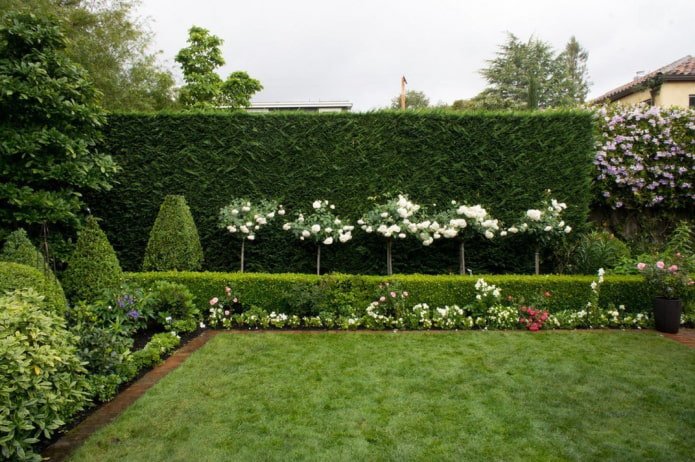
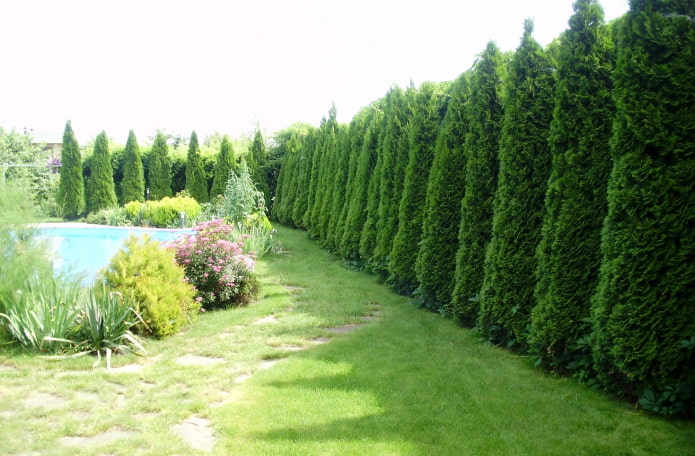
Vertical garden
In order not to wait for the hedge to get stronger and protect you from other people’s unhealthy interest, build a tall flower arrangement on the border with your neighbors from ready-made decorative plants in pots or in an original hanging container. Wooden trellises, metal frames, old boxes or concrete blocks can serve as a support.
A multi-level flowerbed will not hide a large area of the dacha from prying eyes, but if the problem is local, for example, neighbors looking in the windows or like to watch your picnics in the yard, a vertical garden can help out.
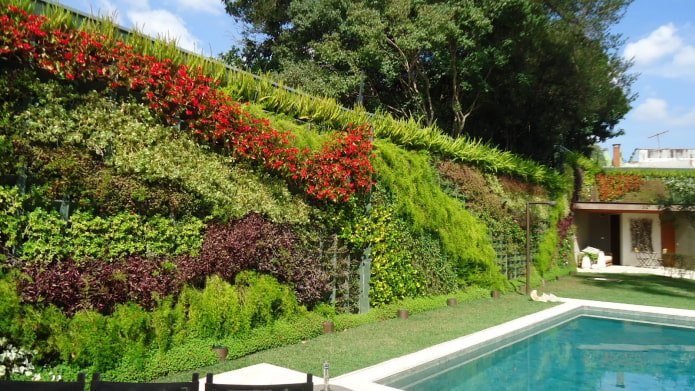
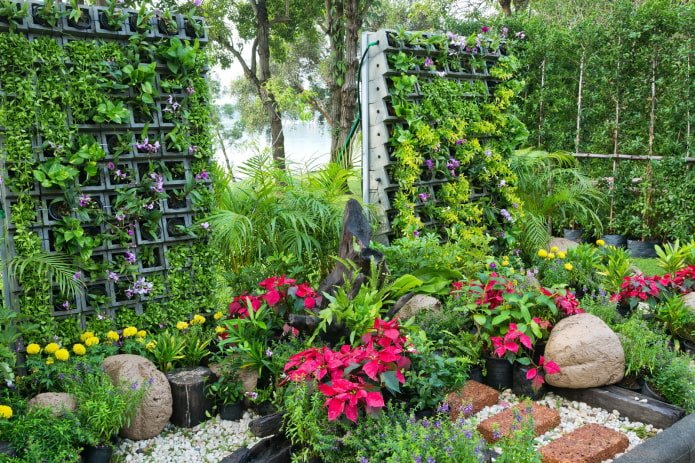
Gazebo or pergola
Continuing with the theme of relaxation: sometimes it is necessary to organize a secluded corner for gatherings in the fresh air, and not to close yourself off around the entire perimeter of the site. Then it makes sense to build a brick gazebo with full walls and a roof or a light wooden pergola, which will be covered with ivy, turning it into a cozy shady green grotto.
Such a structure protects from prying eyes not only those who sit in it, but also the area behind it. Therefore, place the gazebo, terrace, winter garden or pergola so as to obtain maximum privacy.
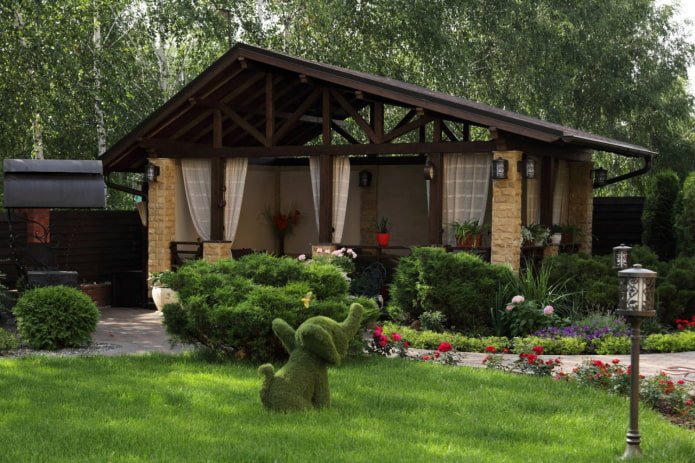
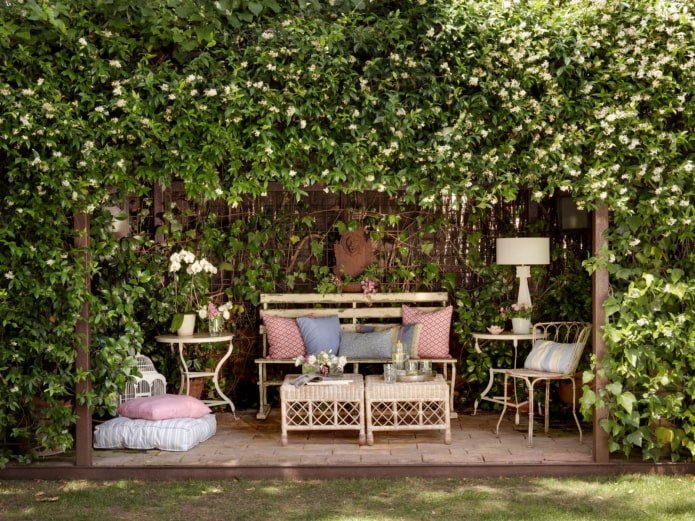
Awning or marquee
Construction of a permanent recreation area requires time, effort and money. It is faster and cheaper to hide behind thick fabric. A folding awning, a collapsible marquee, a stretch screen or a huge beach umbrella will do for this purpose.
If you need to urgently get rid of the annoying attention of your neighbors, and you don’t have any of the listed devices in your household, stretch a rope between the trees and hang out bed linen or curtains to “dry”. Adequate people will get the hint.

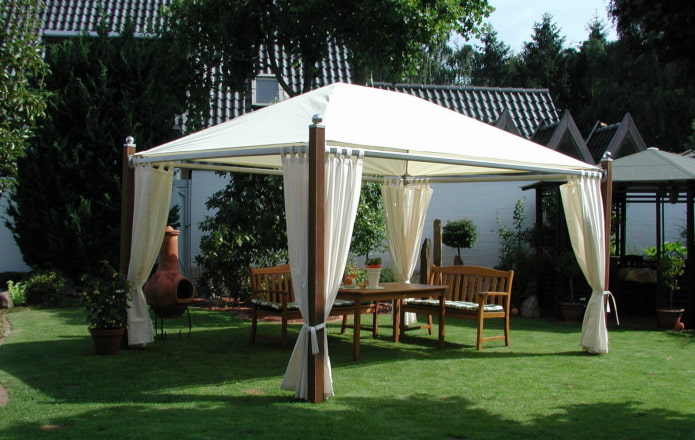
Trees and bushes
We will finish the review of the most effective and reliable way to achieve privacy at your own dacha. It is also the longest – you need to plant evergreen trees with dense crowns (cypresses, firs, cedars, sycamores) on the border of the site, and arrange islands of azaleas or boxwood between them. Fruit and berry bushes are also suitable, but they will lose their splendor in the fall and will stand bare until spring.
The minimum distance from the trunk of a tall tree to the border of someone else’s summer cottage is 2 m.
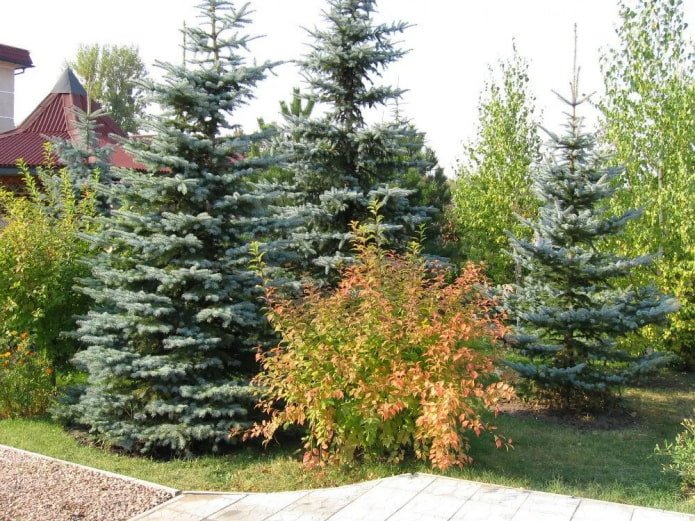
Surrounding the estate with impenetrable thickets is a tempting and aesthetically justified idea. But a carefully cultivated forest can bother neighbors, plunging their house into the shadow and preventing them from cultivating light-loving plants. If people prove to the court the validity of their demands, the trees will have to be cut down. So let’s end the conversation where we started: negotiate, seek compromises and try not to make enemies in your own backyard, otherwise what kind of dacha vacation would you have…
Now reading:
- Dark Bathroom Interior: 35 Photos for Design Inspiration
- Curtain design: more than 90 photos for living rooms, kitchens, bedrooms and other rooms
- Dry Creek in Landscape Design: 33 Ideas and Step-by-Step Guide
- 10 fashion trends in summer house design that will be popular in 2021.
- Corner Computer Desks: 50+ Photos and Ideas with Shelves and Add-ons